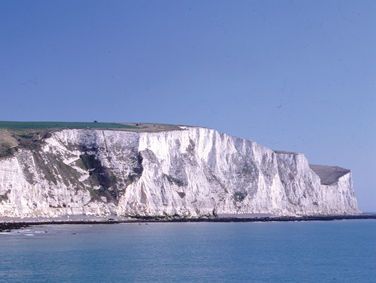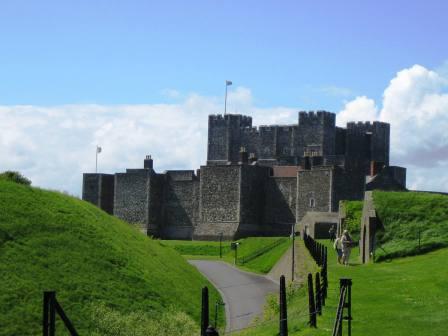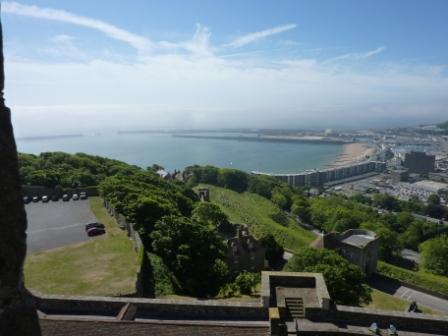| CURLING FAMILIES | CURLING INFORMATION | LEWIS FAMILIES | MARSH FAMILIES |
| The White Cliffs | Dover Castle | Dover Harbour |
|---|---|---|
 |
 |
 |
| Dover 2006 | Dover 2011 | |
THE DOVER FAMILIES PAGE |
| CURLING FAMILIES | CURLING INFORMATION | LEWIS FAMILIES | MARSH FAMILIES |
| The White Cliffs | Dover Castle | Dover Harbour |
|---|---|---|
 |
 |
 |
| Dover 2006 | Dover 2011 | |
|
Dover town is famous for three things: The White Cliffs, The Castle and the busy Ferry Port for services across the narrowest part of The English Channel
to France and Belgium.
Dover is a very old town once the site of an iron age hill fort. The Saxon Church of St Mary in Castro can still be seen within the castle grounds alongside the ruins of a 40ft high Roman lighthouse.
William The Conquerer burnt the town when he invaded in 1066 but its strategic importance made it ideal for the site of an early Norman Castle and the 12th Century Dover Castle is built on this site. The castle is in an important stategic position and was garrisoned until 1958. It is a particularly interesting castle to visit with the medieval tunnels below it which lead out through the cliffs for miles. These were used during the Napoleonic Wars and again during WW2 when there was a hospital, a tracking room and a planning room looking out across the sea from the cliffs. It was from here that the Dunkirk evacuation was planned in 1940. Three unnamed Churches are listed for Dover in the Domesday Book of 1086. Probably St Mary the Virgin, St James′ and St Peter′s. St Mary the Virgin was built on the site of an older Saxon church. The tower and part of the nave date from the C11. Parish registers begin 1557 and are entered into IGI. The original St James′ was a Saxon church but by C18 it was in need of repair and enlargement and a new St James′ was built between 1860 and 1862. This became the main Parish Church. The old Church was restored in 1869 but was severely damaged in WW2. Parish Registers begin 1595 and are entered into IGI. St Peter′s fell into disrepair so it was not used after 1581 and soon after it was demolished. Nearby are the Churches of St Andrew, Buckland in Dover, St Peter and St Paul, River and St Peter and St Paul, Charlton. Dover was one of the Cinque Ports and had a busy harbour with boats operating across the Channel. There were large shipbuilding and fishing industries. Its importance grew after the Railway arrived in 1861. The first car ferry began in 1928 and the first train ferry in 1936. Dover was too well manned with Revenue Officers and garrisoned to be a smuggling centre in itself but smuggling flourished in nearby towns like Folkestone, Sandgate and Deal. On one occasion in about 1820 eleven Folkestone and Sandgate smugglers were caught and locked up in Dover gaol. A mob of men, followed by wives and children set off from Folkestone and broke the smugglers out. They disappeared and were never retaken. The Gaol was so badly damaged it had to be rebuilt. The incident is recorded in a song of Dover Gaol. Today Dover is the principal cross-channel ferry harbour and is a large and busy town with a population of about 40,000 people many of whom will be employed within the tourist industry. |
| Curling Families | Lewis Families | Marsh Families |